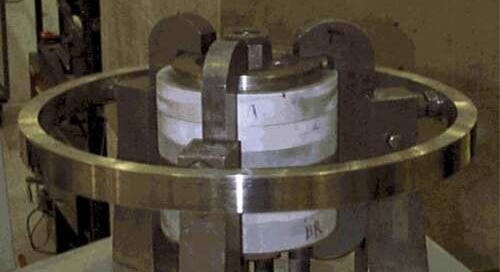The enigma of nuclear weapons
Why do explosive nuclear reactions self-quench in the laboratory?

Numerous demonstrations have been performed on laboratory models of nuclear weapons. The models are constructed from highly-enriched uranium and thus provide insight into the fast nuclear chain reaction. The fissile mass of the models is reduced in size with respect to that of purported nuclear weapons. In all models, the nuclear chain reactions self-extinguish after releasing a modest amount of energy.
These experimental results raise the fundamental question: “Why?” Why do nuclear weapons models produce nuclear chain reactions that self-extinguish?
Reading the literature of “burst reactors”, there is only one answer to that question: Laboratory models of nuclear explosions are self-limiting due to thermal expansion of the fissile material. As the nuclear reaction proceeds, much of the energy is deposited in the fissile material itself in the form of heat. As the material heats it undergoes thermal expansion causing the spacing between nucleii of the fissile material to increase, creating a greater separation, on average, between the nuclear reactants.
In the thermal-expansion model of nuclear reactions, massively forceful nuclear explosions are possible since the nuclear chain reaction can outrace the thermal expansion under certain circumstances. This calculation is presented in the Los Alamos Primer.
However, there are reports that suggest that the phenomena of self-quenching of explosive nuclear reactions may involve more than just thermal expansion. Namely, the time course of the nuclear reaction in burst reactors has not been reproduced in simulations as seen below. In particular, the time course of radioactivity in a burst reactor is found, in some cases, to have an asymmetric shape; the rate of rise in the radioactivity does not match the fall in the radioactivity. The thermal-expansion model of burst reactors has not been able to explain this asymmetry.


This suggests that there may be another significant factor causing the self-quenching of burst reactors. Such factors do play a role in the control of other types of nuclear reactors.
In summary, the question of why chain reactions in burst reactors self-extinguish is an open question. The converse question, of course, is how the purportedly astronomically powerful nuclear reactions can be obtained in a nuclear weapon.
Thus, the possibility only grows that nuclear weapons are simply a massive, disgraceful, terroristic, totalitarian hoax.


